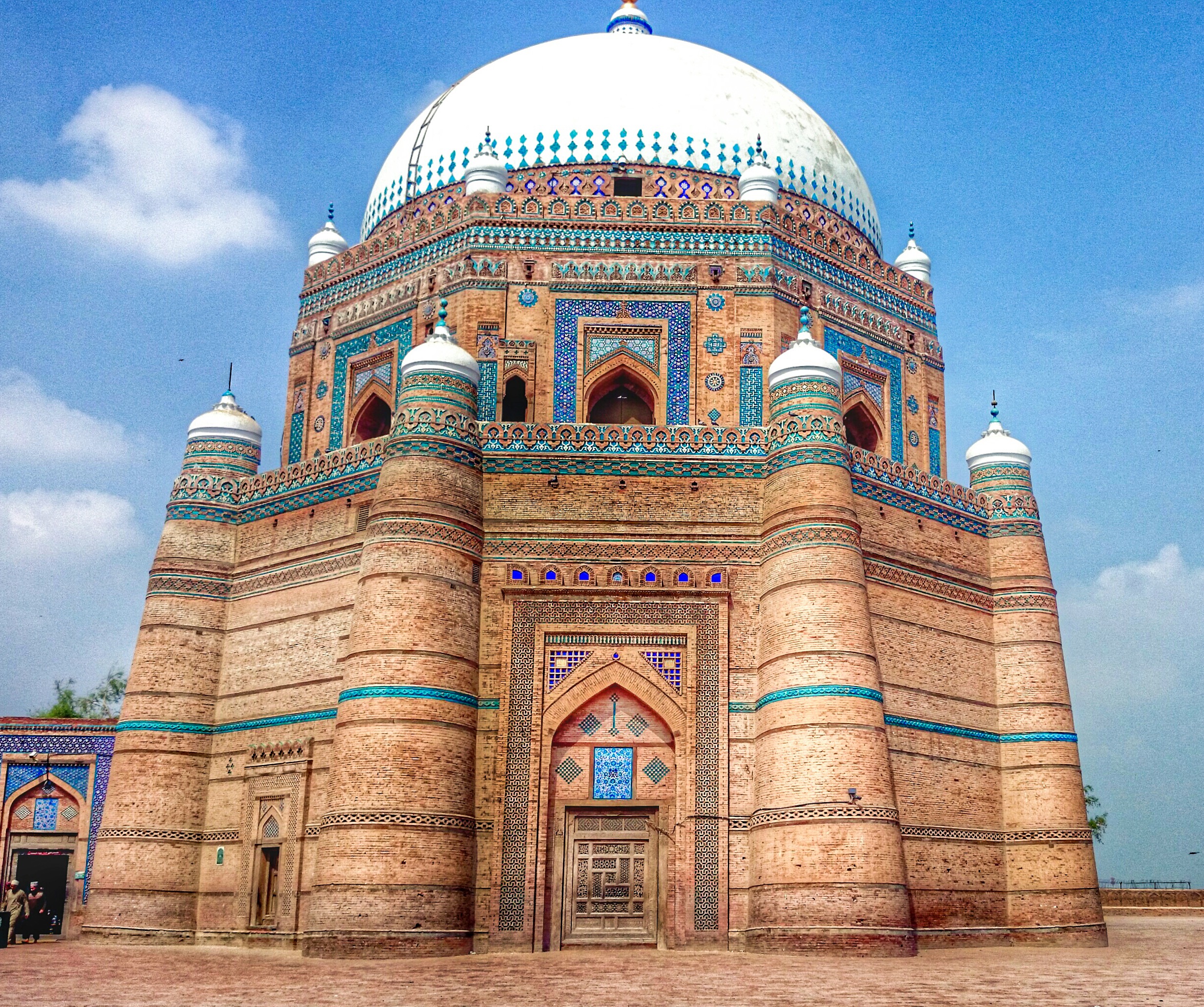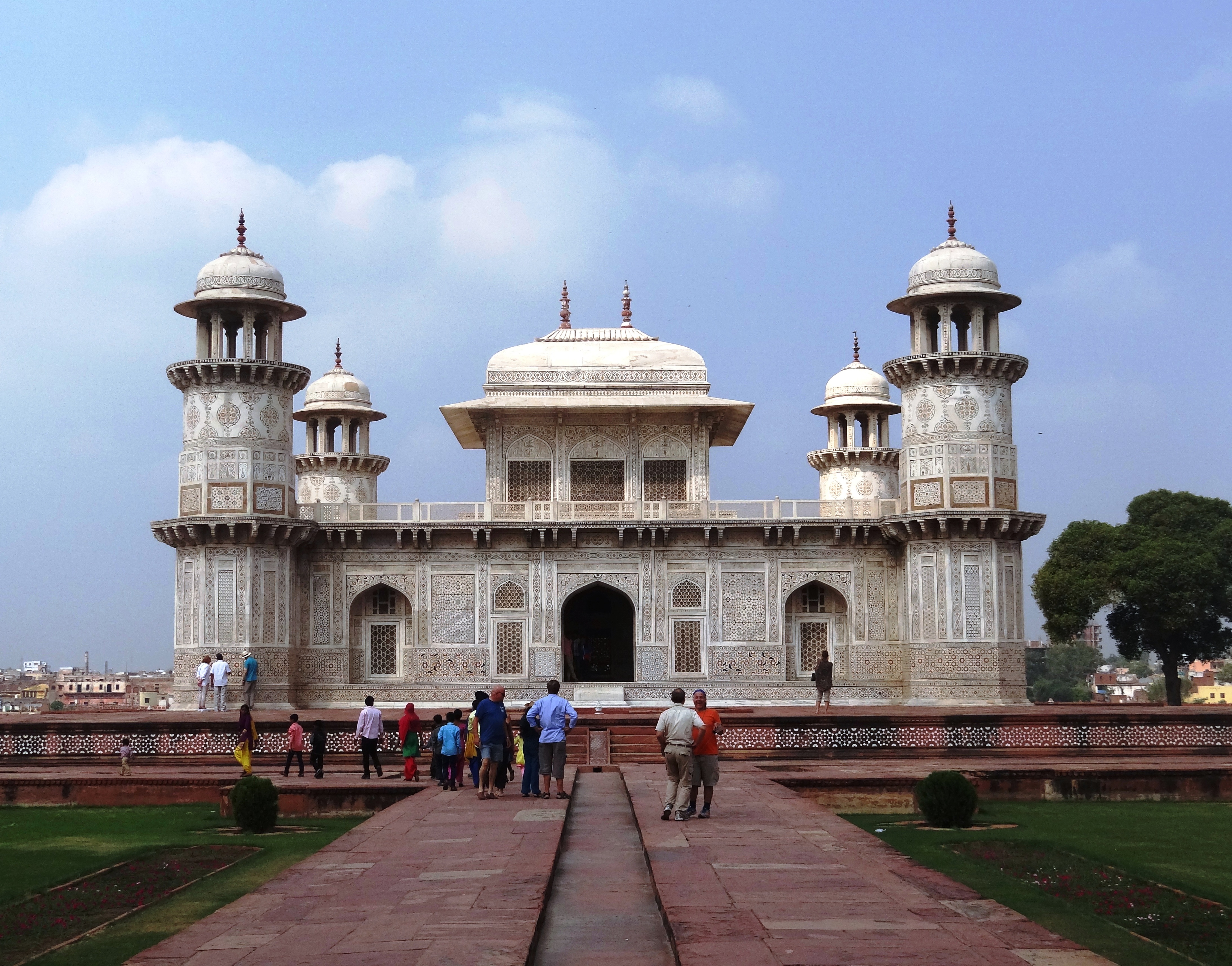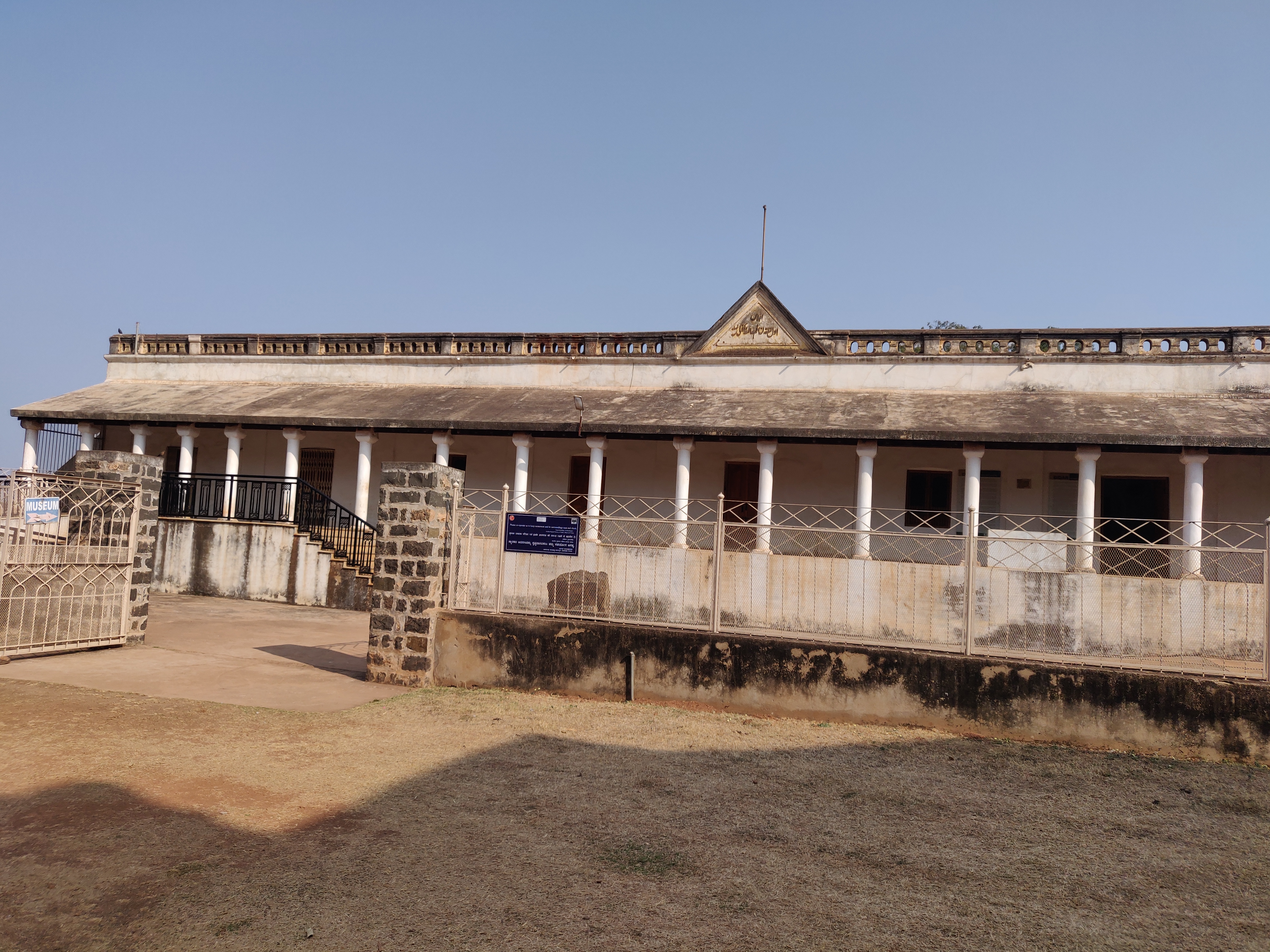|
Barid Shahi Tombs
The Barid Shahi tombs are tombs of the Barid Shahi dynasty. They are located in Bidar in the Indian state of Karnataka. History They were built during the medieval period in the 16th and 17th centuries. Architecture The tombs were built in the Indo-Islamic style typical of the Deccan Sultanates. Similar necropolises include the Qutb Shahi tombs in Hyderabad. They are set in a garden, of which a few mango and tamarind trees still survive. There is an idgah at the eastern end of Qasim Barid's tomb. Tomb of Qasim Barid The Tomb of Qasim Barid lies to the East of his son Amir Barid's unfinished tomb. Tomb of Amir Barid Amir Barid lies in an unfinished tomb. He began the construction of his tomb, however, he died in 1542 CE before the tomb could be completed. Tomb of Ali Barid The tomb of Ali Barid was completed in 984 Hijri (1576-1577 CE), three years before his death. Tomb of Ibrahim Barid The tomb of Ibrahim Barid is a replica of his father Ali Barid's tomb. Tomb of Q ... [...More Info...] [...Related Items...] OR: [Wikipedia] [Google] [Baidu] |
Bidar, Karnataka
Bidar (/ biːd̪ər/) is a city in the north-eastern part of Karnataka state in India. It is the headquarters of Bidar district, which borders Maharashtra and Telangana. It is a rapidly urbanising city in the wider ''Bidar Metropolitan area''. The city is well known for its many sites of architectural, historical and religious importance. Being located at the farthest of around from the state capital Bangalore, it has been neglected by the state government for a long time. However, owing to its rich heritage, the city has a prominent place on the Archaeological Map of India. Picturesquely perched on the Deccan plateau, the Bidar fort is more than 500 years old and still standing strong. According to the book "Bidar Heritage" published by the state ''Department of Archaeology, Museums and Heritage'', of the 61 monuments listed by the department, about 30 are tombs located in and around Bidar city., explaining its nickname, "City of Whispering Monuments". The heritage sites i ... [...More Info...] [...Related Items...] OR: [Wikipedia] [Google] [Baidu] |
Indo-Islamic Architecture
Indo-Islamic architecture is the architecture of the Indian subcontinent produced by and for Islamic patrons and purposes. Despite an initial Arab presence in Sindh, the development of Indo-Islamic architecture began in earnest with the establishment of Delhi as the capital of the Ghurid dynasty in 1193. Succeeding the Ghurids was the Delhi Sultanate, a series of Central Asian dynasties that consolidated much of North India, and later the Mughal Empire by the 15th century. Both of these dynasties introduced Persianate architecture and art styles from Western Eurasia into the Indian subcontinent. The types and forms of large buildings required by Muslim elites, with mosques and tombs much the most common, were very different from those previously built in India. The exteriors of both were very often topped by large domes, and made extensive use of arches. Both of these features were hardly used in Hindu temple architecture and other indigenous Indian styles. Both types o ... [...More Info...] [...Related Items...] OR: [Wikipedia] [Google] [Baidu] |
Tomb Qasim Barid Shah
A tomb ( grc-gre, τύμβος ''tumbos'') is a repository for the remains of the dead. It is generally any structurally enclosed interment space or burial chamber, of varying sizes. Placing a corpse into a tomb can be called ''immurement'', and is a method of final disposition, as an alternative to cremation or burial. Overview The word is used in a broad sense to encompass a number of such types of places of interment or, occasionally, burial, including: * Architectural shrines – in Christianity, an architectural shrine above a saint's first place of burial, as opposed to a similar shrine on which stands a reliquary or feretory into which the saint's remains have been transferred * Burial vault – a stone or brick-lined underground space for multiple burials, originally vaulted, often privately owned for specific family groups; usually beneath a religious building such as a church ** Cemetery ** Churchyard * Catacombs * Chamber tomb * Charnel house * Church mon ... [...More Info...] [...Related Items...] OR: [Wikipedia] [Google] [Baidu] |
Tomb Of Ali Barid Shah
A tomb ( grc-gre, τύμβος ''tumbos'') is a repository for the remains of the dead. It is generally any structurally enclosed interment space or burial chamber, of varying sizes. Placing a corpse into a tomb can be called ''immurement'', and is a method of final disposition, as an alternative to cremation or burial. Overview The word is used in a broad sense to encompass a number of such types of places of interment or, occasionally, burial, including: * Architectural shrines – in Christianity, an architectural shrine above a saint's first place of burial, as opposed to a similar shrine on which stands a reliquary or feretory into which the saint's remains have been transferred * Burial vault – a stone or brick-lined underground space for multiple burials, originally vaulted, often privately owned for specific family groups; usually beneath a religious building such as a church ** Cemetery ** Churchyard * Catacombs * Chamber tomb * Charnel house * Church mon ... [...More Info...] [...Related Items...] OR: [Wikipedia] [Google] [Baidu] |
Barid Shahi Dynasty
Bidar sultanate was one of the Deccan sultanates of late medieval southern India. The sultanate emerged under the rule of Qasim Barid I in 1492 and leadership passed to his sons. Starting from the 1580s, a wave of successions occurred in the rulership of the dynasty which ended in 1609 under the last Sultan Amir Barid III who was eventually defeated in 1619 by the Bijapur sultan Ibrahim Adil Shah II. Bidar became annexed into the Bijapur Sultanate. History Qasim Barid and Amir Barid The sultanate was founded in 1492 by Qasim Barid I, who was Georgian and enslaved by Turks. He joined the service of the Bahmani Sultan Muhammad Shah III. He started his career as a ''sar-naubat'' but later became the ''mir-jumla'' (prime minister) of the Bahmani sultanate. During the reign of Mahmood Shah Bahmani II (r. 1482 – 1518), he became the de facto ruler. After the death of Mahmud Shah Bahmani in 1518, he was succeeded by four sultans, one after another, but they were mere pupp ... [...More Info...] [...Related Items...] OR: [Wikipedia] [Google] [Baidu] |
Bidar
Bidar (/ biːd̪ər/) is a city in the north-eastern part of Karnataka state in India. It is the headquarters of Bidar district, which borders Maharashtra and Telangana. It is a rapidly urbanising city in the wider ''Bidar Metropolitan area''. The city is well known for its many sites of architectural, historical and religious importance. Being located at the farthest of around from the state capital Bangalore, it has been neglected by the state government for a long time. However, owing to its rich heritage, the city has a prominent place on the Archaeological Map of India. Picturesquely perched on the Deccan plateau, the Bidar fort is more than 500 years old and still standing strong. According to the book "Bidar Heritage" published by the state ''Department of Archaeology, Museums and Heritage'', of the 61 monuments listed by the department, about 30 are tombs located in and around Bidar city., explaining its nickname, "City of Whispering Monuments". The heritage sit ... [...More Info...] [...Related Items...] OR: [Wikipedia] [Google] [Baidu] |
Karnataka
Karnataka (; ISO: , , also known as Karunāḍu) is a state in the southwestern region of India. It was formed on 1 November 1956, with the passage of the States Reorganisation Act. Originally known as Mysore State , it was renamed ''Karnataka'' in 1973. The state corresponds to the Carnatic region. Its capital and largest city is Bengaluru. Karnataka is bordered by the Lakshadweep Sea to the west, Goa to the northwest, Maharashtra to the north, Telangana to the northeast, Andhra Pradesh to the east, Tamil Nadu to the southeast, and Kerala to the southwest. It is the only southern state to have land borders with all of the other four southern Indian sister states. The state covers an area of , or 5.83 percent of the total geographical area of India. It is the sixth-largest Indian state by area. With 61,130,704 inhabitants at the 2011 census, Karnataka is the eighth-largest state by population, comprising 31 districts. Kannada, one of the classical languages of In ... [...More Info...] [...Related Items...] OR: [Wikipedia] [Google] [Baidu] |
Deccan Sultanates
The Deccan sultanates were five Islamic late-medieval Indian kingdoms—on the Deccan Plateau between the Krishna River and the Vindhya Range—that were ruled by Muslim dynasties: namely Ahmadnagar, Berar, Bidar, Bijapur, and Golconda. The sultanates had become independent during the break-up of the Bahmani Sultanate. In 1490, Ahmadnagar declared independence, followed by Bijapur and Berar in the same year. Golconda became independent in 1518, and Bidar in 1528. Although the five sultanates were all ruled by Muslims, their founders were of diverse, and often originally non-Muslim origins: the Ahmadnagar Sultanate was of Hindu-Brahmin origins; the Berar Sultanate by a Kannadiga Hindu convert; the Bidar Sultanate was founded by a Georgian slave; the Bijapur Sultanate was founded by a Georgian slave purchased by Mahmud Gawan; and the Golconda Sultanate was of Turkmen origin. Although generally rivals, the sultanates did ally with each other against the Vijayanagara ... [...More Info...] [...Related Items...] OR: [Wikipedia] [Google] [Baidu] |
Qutb Shahi Tombs
The Qutub Shahi Tombs are located in the Ibrahim Bagh (garden precinct), close to the famous Golconda Fort in Hyderabad, India. They contain the tombs and mosques built by the various kings of the Qutub Shahi dynasty. The galleries of the smaller tombs are of a single storey while the larger ones are two storied. In the centre of each tomb is a sarcophagus which overlies the actual burial vault in a crypt below. The domes were originally overlaid with blue and green tiles, of which only a few pieces now remain. The complex was put by UNESCO on its "tentative list" to become a World Heritage Site in 2014, with others in the region, under the name Monuments and Forts of the Deccan Sultanate (despite there being a number of different sultanates). Seven Qutub Shahi Tombs Sultan Quli Qutb-ul-Mulk Jamsheed Quli Qutb Shah srival Ibrahim Quli Qutub Shah Wali (1550-1580) Muhammad Quli Qutb Shah (1580-1612) Sultan Muhammad Qutb Shah (1612-1626) Abdullah ... [...More Info...] [...Related Items...] OR: [Wikipedia] [Google] [Baidu] |
Eidgah
Eidgah or Idgah, also Eid Gah or Id Gah ( fa, "site of Eid bservances; bn, ঈদগাহ; pnb, ; ur, ; hi, ईदगाह) is a term used in South Asian Islamic culture for the open-air enclosure usually outside the city (or at the outskirts) reserved for Eid prayers offered in the morning of Eid al-Fitr and Eid al-Adha. It is usually a public place that is not used for prayers at other times of the year. On the day of Eid, the first thing Muslims do in the morning is gather usually at a large open ground and offer special prayers, in accordance with the Sunnah (traditions of Muhammad). Although the usage of the term ''Eidgah'' is of Indian origin, it may be used for the ''musalla'', the open space outside a mosque, or other open grounds where Eid prayers are performed, due to the lack of a specific Islamic term for a site of Eid observance. The Eidgah is mentioned in the famous Bengali poem by Kazi Nazrul Islam, O Mon Romzaner Oi Rozar Sheshe. Prescriptions in ... [...More Info...] [...Related Items...] OR: [Wikipedia] [Google] [Baidu] |
Chahartaq (architecture)
Chartaq ( fa, چارطاق), chahartaq (), chartaqi (), or chahartaqi (), literally meaning "having four arches", is an architectural unit consisted of four barrel vaults and a dome. History Chartaqi was a prominent element in Iranian architecture, having various functions and used in both secular and religious contexts for 1,500 years, with the first instance apparently being developed in the Sasanian city of Gor (Firuzabad) in 210s AD by King Ardashir I. The biggest instance of chahartaq is that of the so-called Palace of Shapur I at Bishapur, also in Pars. Many pre-Islamic chahartaqs have survived, but they are usually just the sole surviving structure of a much bigger complex. The chahartaq structure was adopted in Islamic architecture.Dietrich Huff"ČAHĀRṬĀQ" ''Encyclopaedia Iranica'', December 15, 1990 A related concept is ''čahārqāpū'' (). File:Baze Hoor fire temple.jpg, Baze Hoor fire temple, Arsacid period File:Zahak Fortress.jpg, Chahartaqi of the Zahhak Cast ... [...More Info...] [...Related Items...] OR: [Wikipedia] [Google] [Baidu] |







